It's not just pandas, great apes and big cats - ugly animals need our attention too. This week, we find out why some of nature's least attractive species are under threat and explore the arguments for conserving bacteria, fungi and even parasites! In the news we hear how to fix mitochondrial faults, discover a cocktail of bacteria that can see off C. diff and we find out how dung beetles are on the ball when it comes to keeping cool.
In this episode
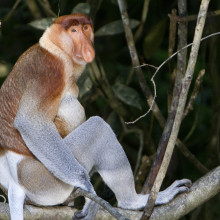
01:23 - The Ugly Animal Preservation Society
The Ugly Animal Preservation Society
with Simon Watt
The IUCN, the International Union for Conservation of Nature, currently has over 4,000 species listed as Critically Endangered on its Red list, a comprehensive list of threatened species.
This includes high profile animals like the Mountain Gorilla and lots of different species of leopard, but also snails, worms, spiders, and other less graceful animals. Publicity and fundraising campaigns often focus on the cute, charismatic or cuddly animals, possibly leaving nature's less aesthetically pleasing species behind.
Biologist Simon Watt is now taking a stand for these underdogs and has created the Ugly Animal Preservation Society.
Helen - Simon, thanks for joining us. What inspired you in the first place to be the voice for ugly animals?
Simon - It's been one of those ideas that's been kicking around in my brain for a couple of years. I think the real thing that was the crux was, as I was doing a talk at a book festival, we were advertising books and selling things for some biology books that I was writing for, and I mentioned how myopic we are in terms of our conservation efforts in the species that we view and deem as being worthwhile. I was championing to the crowd all these ugly things which I enjoy and I find fascinating and do matter just as much biologically. And one of the audience just said, "You should do something about that."
Helen - So why are ugly animals important? Why should we be conserving them?
Simon - We can argue that to some extent, at least all of the living things, all of the creatures in the planet have got some kind of value, and we can say that mainly because there's a web of interconnectedness in ecology. I remember at school, whenever we're studying biology, I used to find ecology very boring actually because it seems that the answer to every single question is just everything is connected. So, I think we have to think about all the ugly things because they do have a place.
Helen - Absolutely and are they being failed by conservation efforts at the moment, these less immediately charismatic species?
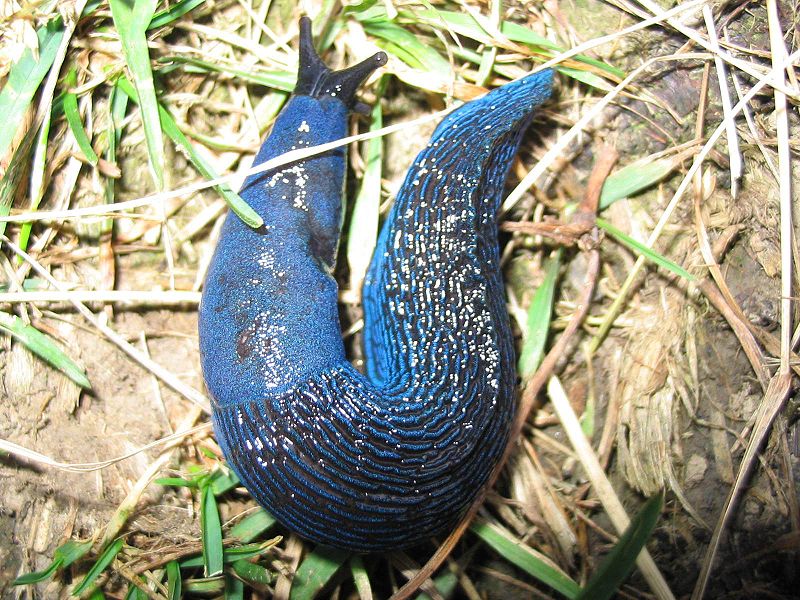 Simon - That's hard to tell. I think the thing is, we have to get away from this idea of a species-based approach to conservation and the good news is that we, by and large, are. Things like the panda and whatnot do matter as icons. But what we really need to focus on is the habitat. If we save where these species live, generally, everything else gets saved besides. So the panda actually is a good example for that because in conserving the panda, we're also conserving the territory of the red panda and of golden monkeys, and all sorts of other things that live in the bamboo forests there.
Simon - That's hard to tell. I think the thing is, we have to get away from this idea of a species-based approach to conservation and the good news is that we, by and large, are. Things like the panda and whatnot do matter as icons. But what we really need to focus on is the habitat. If we save where these species live, generally, everything else gets saved besides. So the panda actually is a good example for that because in conserving the panda, we're also conserving the territory of the red panda and of golden monkeys, and all sorts of other things that live in the bamboo forests there.
Helen - So that's an example of a species that's an umbrella for conserving wide areas of habitat like you say. Are we going to be able to use ugly species as ambassadors for conservation? How are we going to get people excited about conserving things that aren't giant pandas, and leopards, and so on?
Simon - I think we really can because they might not be pretty, but they're still damn interesting. There are some amazing creatures out there. One of the ones that I frequently champion, just because I think it's amazing, is this thing called the Canadian blue-grey taildropper slug. It's great because it's a "smurf" blue which is interesting in its own right, but if you scare it, its bum drops off. I guess it's a survival mechanism.
Helen - Sorry, can I just check - a blue slug whose bum drops off it gets scared, is that right?
Simon - That's spot on. Basically, if a predator sneaks up on it, it leaves a meal behind, so the predator will stop and eat the tail while it legs it.. Well, legs it as fast as a slug can.
Helen - And its bum grows back I hope?
Simon - Yes, it's like a salamander, which can regrow various parts of its body.
Helen - That's great. I have seen little geckos drop their tails when they get caught by cats in the tropics, it's quite odd because it slops off and then wriggles around for a bit, so I can see how that would work. What other favourite ugly species are you championing the conservation of? What else should we be caring about?
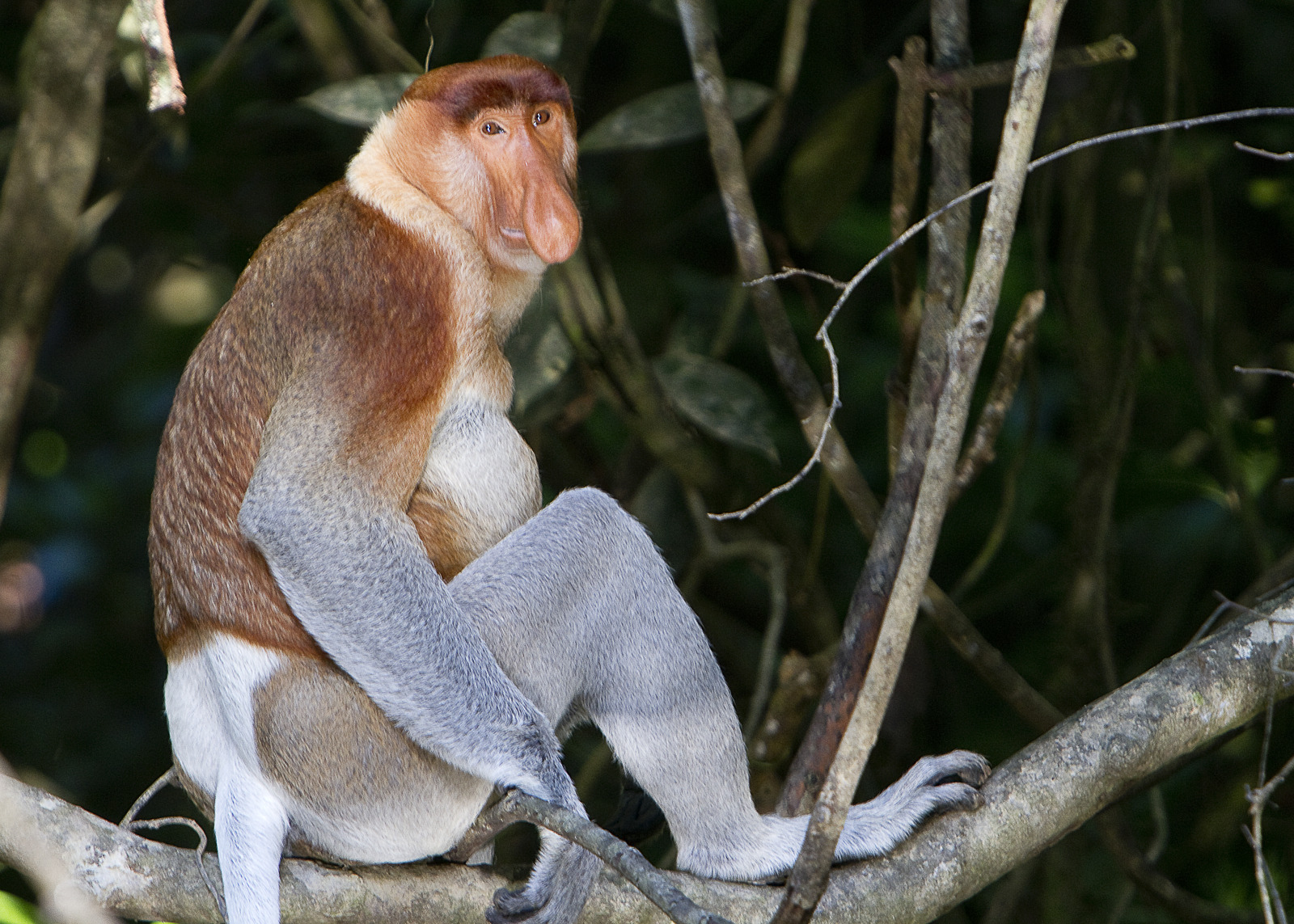 Simon - A good time to ask because the Ugly Animal Preservation Society, of which I'm president for life, we had our first - we call it our general meeting, but was basically an excuse to get lots of comedians that I know to get together and each one was going to champion a different ugly species. At the end, the audience voted as to what was going to be the representative, our mascot, our equivalent of the panda - an ugly panda, if you will. And the audience voted for the proboscis monkey which has been championed by Ellie Taylor.
Simon - A good time to ask because the Ugly Animal Preservation Society, of which I'm president for life, we had our first - we call it our general meeting, but was basically an excuse to get lots of comedians that I know to get together and each one was going to champion a different ugly species. At the end, the audience voted as to what was going to be the representative, our mascot, our equivalent of the panda - an ugly panda, if you will. And the audience voted for the proboscis monkey which has been championed by Ellie Taylor.
Helen - I would say the proboscis monkey is not that ugly, is it?
Ben - I think they're wonderful creatures. I've always nicknamed them the Jim Henson monkey because they look an awful lot like a monkey that was designed in Jim Henson's creature workshop. It doesn't really look real. It looks a little bit prosthetic, that nose.
Simon - If you think the nose is cute enough, their digestive system should really put you off. They are basically massively flatulent - their stomach ends up being bloated because of their diets. They're just peculiar-looking. If nothing else, you can't see their mouth, so we can't lip read.
Helen - I assume that these ugly species are everywhere. It's not just the case that we have to go off to a tropical rainforest to find these things. Are they also in our backyard even and easier places to find?
Simon - Well, I think ugly is in the eye of the beholder, but definitely, the vast majority of things that are out there are not cute and cuddly. We are so obsessed with mammals and birds. We basically don't care about things if they're not cute and fluffy, if they don't have the kind of face that we can recognise. The vast majority of stuff out there just doesn't fit our kind of criteria.
Helen - Absolutely. I'm always trying to champion the fish because they don't have feathers or fur, but what can we start doing to help protect these ugly species? What do we need to do?
Simon - Actively, habitat is the way forward. We have to accept that according to recent estimates, there might be say, 8.3 million species of plants and animals and things out there. And the only real way of conserving them is to look after where they live, to accept these webs of interconnectedness, that if you affect one species, you will affect the other. And perhaps the best example we can think of like this at the moment is the problems we've been having with bees. We can see how whenever the bee populations crash, there's trouble with pollinating certain plants and things like that.
Helen - And presumably, you've got the connections back from these ugly species to the ones we think are more beautiful as well. So, if we want to preserve the panda, we need to think about these ugly ones too. All of those connections are important. We asked our listeners if they had any examples of ugly things they would like to conserve. Jo Kelly suggested the Blob fish. I don't know if any of you have seen this extraordinary photograph of a deep sea fish. I mean, the poor thing has been yanked out of its habitat and brought many hundreds if not, thousands of meters up to the surface so it's looking a bit sad. I would definitely champion that one.
Simon - Yes, it does look emotional, doesn't it?
Helen - It really does. They're quite sad.
Ben - It has been described as the most miserable-looking species on Earth. Now I think the blob fish may have been one of the ones that was promoted at your evening last week. What was said about it? Why should we conserve the blob fish?
Simon - It wasn't promoted directly in our case. I actually did a pre-record and a little bit of animation and it ended up introducing some of our acts.
Ben - So the blob fish himself was being the compare for the evening?
Simon - A little bit. He introduced me.
Ben - Wonderful! CBAxel on Twitter has already said that the ugly animal he would preserve is himself and we asked why, and he said, "Because it's me." Now obviously, that's not a very positive way to think about yourself, but I guess it could be argued that to most of the animals species, humans aren't all that attractive anyway.
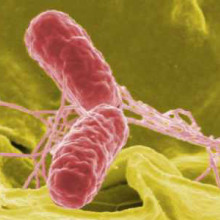
08:57 - Conservation of Microbes
Conservation of Microbes
with Dr Gareth Griffith, Aberystwyth University
Microorganisms like bacteria are absolutely everywhere. We've yet to investigate an environment on Earth that hasn't shown at least some evidence of bacteria life.
Even their ubiquity and their ability to survive in almost any environment as well as their reputation for causing diseases in humans and in important crop plants, you could be forgiven for thinking that microbes are not, and should not be, a conservation priority.
But that's not the case according to Aberystwyth University researcher Gareth Griffith. He's calling for a global strategy on microbial conservation and he joins us now.
Ben - So Gareth, microbes, are they really under threat?
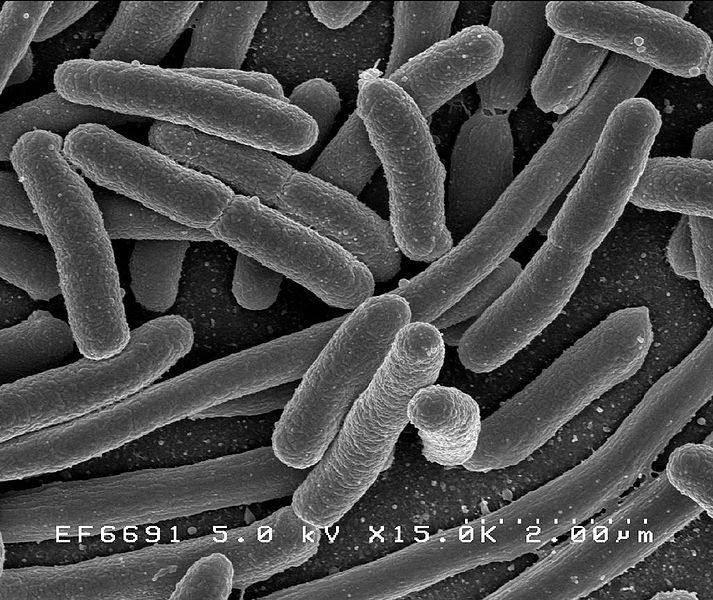 Gareth - Certainly, we need to change the perception that they are everywhere and all of them are everywhere, and therefore, by definition, they're unlikely to be endangered, or go extinct. That was a perception that held strongly for a long time in microbiology.
Gareth - Certainly, we need to change the perception that they are everywhere and all of them are everywhere, and therefore, by definition, they're unlikely to be endangered, or go extinct. That was a perception that held strongly for a long time in microbiology.
Ben - This was the strange idea that essentially, all microbes exist everywhere, but the environment then just selects out the ones that succeeds. That's not the case, you're saying.
Gareth - No, there's vast amounts of evidence now. As we look more closely, that is not the case. Most species that have been looked at show biogeographical distribution.
Ben - So, with regards of conservation, what actually is the problem that we're facing?
Gareth - I think in the case of the microbes is that, it's the absence of any appreciation that they might face extinction to start with. We're starting at the very bottom here. It's not that they're neglected. They're not even considered. I don't think the CBD (Convention on Biological Diversity) has made any mention of bacteria or the archaea in terms of the fact that they might be threatened. I'd extend it just to point out that all of these domains of life, all of the kingdoms within the eukaryotes, the ones we focus our attention on are just the two kingdoms of plants and the animals, and all other ones need some attention.
Ben - So, they're not appearing on the Red list. They're obviously not becoming icons for animal preservation societies. How is this reflected in the actual scientific research? Is there a body of mainstream conservation research into microbes that just isn't getting the promotion, or is the research not there in the first place?
Gareth - Well, some microbes are getting some attention. I'm a mycologist. That's my specialty within microbiology and some fungi are attracting some conservation attention, but definitely second class citizens relative to the plants.
Ben - We know that some fungi actually play incredibly important roles in keeping plants alive. There are what's called mycorrhizal relationships between the roots and the fungi that live in the soil. Is this the sort of thing you were worried about losing if we fail to conserve microbes properly?
Gareth - Yes, the survival of many larger organisms is very likely dependent on the presence of certain microbes that help them function properly.
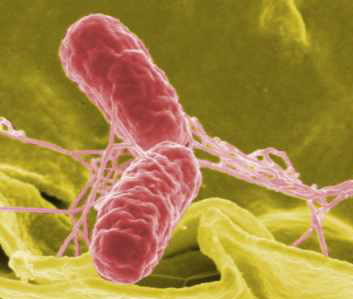 Ben - So, it isn't just the case that we need to conserve them for their own sake, but in fact, there are various knock-on effects that we could have if we fail to put this effort in.
Ben - So, it isn't just the case that we need to conserve them for their own sake, but in fact, there are various knock-on effects that we could have if we fail to put this effort in.
Gareth - Yes, I think we're learning an awful lot now. The fact that we can do this next generation sequencing, this very high throughput sequencing now is revealing to us where these microbes are and also where they aren't. And also, for example in human health, the fact that the vast majority of gut microbes aren't pathogenic to us. We're now building up a picture that the absence of a healthy gut community leads to ill health.
Ben -
In fact, we'll be hearing a bit later on in the show about how a certain cocktail of gut microbes can help protect against C. diff which is a very dangerous infection. So, does that mean that there's a genetic wealth of potential out there in the microbial community that we could be taking advantage of?
Gareth - Yes, if you take it as a whole, the microbes are metabolically hugely diverse and can conduct many biochemical reactions that animals and plants can't conduct. Therefore, for our own sake, just for biotechnological reasons, we have an interest in making sure that none of them go extinct.
Ben - That reflects something that a user on Twitter said, their name is FoodiFanciPants. They've got in touch to say that parasites and bacteria are nature's unique chemical converters, and so, they're absolutely worth conserving. Now this seems quite a one-sided way of looking at it. We think of things we can do with them, things we can use them for, opportunities we have to exploit them. Presumably, there are also broader arguments with regards to the fact that these are just as worth conserving as any panda or rhino?
Gareth - Yes, all species have equal value in that respect. I know that some will attract more attention, like the panda, but there's no reason to have a hierarchy of importance amongst the organisms that inhabit the planet.
Ben - So, what do we now need to do to start - not just actually start conserving them, but how do we select priorities amongst microbes because we have our Red lists that categorise things as critically endangered or endangered, or extinct in the wild. That gives us a hierarchy of priority as to which ones need the most efforts. How can we start putting together something like that for species as diverse and as poorly understood as the microbial community?
Gareth - I think
exactly as Simon said earlier. We need to focus on the habitats, but not just the habitats where you can see larger organisms. There's virtually no habitat on the planet that is sterile, but there are many that don't have macroorganisms, macrobes as I think of them - all the animals and plants that are visible. So you could take the hot springs or the many cold areas of the planet where there aren't any larger organisms, but there are diverse microbes present there. So it's concentrating on habitats, but not just all habitats.
Ben - One habitat that you have mentioned in some of your writing about this is actually Lake Vostok. This is an interesting subglacial lake which we know that a Russian team have been attempting to make their way down into. Presumably, it could harbour unique microbial species. Is this something we need to think about before we actually get into that, just as much as we think about making sure we don't accidentally infect Mars with microbes on space probes?
Gareth - Yes, I think it's an excellent argument. With Lake Vostok, since I wrote the article that we're talking about, the Russians have drilled in, but I think they did face quite a lot of criticisms so they were more cautious than they had originally intended to be. So they only actually extracted a small amount of water and didn't find anything in there. But I think their next attempt will involve a lot more caution because of the dangers of infecting with surface microbes.
Ben - Speaking of infection of course, the one thing that really makes people think of bacteria and microbes is in their role in human infection and in destroying plants. How can we balance the need to conserve these sorts of species with the fact that actually they're deleterious for our health or our lifestyles?
Gareth - I think in many cases, and I think C. diff might be a good example of this, it's the disruption of healthy natural microbial ecosystem that can lead to disease. Nature abhors a vacuum therefore, if you disrupt the existing ecosystem, pathogenic organisms can thrive.
Ben - You're calling for what you've called a global strategy for microbial conservation. How would that actually work?
Gareth - I think it's up to us as microbiologists to get ourselves together and decide to focus on certain priorities. As I said, it's those habitats that are neglected, they're the ones that the microbiologist could focus on. The one I haven't mentioned yet is soil. Soil is tremendously important for all human activity yet, very much unknown. We know that they're most diverse habitats on the planet, even Leonardo da Vinci 4 or 500 years ago said that we knew more about the stellar constellations than the soil beneath our feet, and that is still true now.
Ben - So, there is clearly a need to try to conserve these habitats. What sorts of scientific techniques are we actually able to put to the task?
Gareth - We're very lucky to be benefiting from advances in molecular biology, especially high throughput sequencing. This is the technique that will shortly give us the one thousand pound human genome and so forth. These things can be applied to the study of microbial ecology as well. So we can just take samples of seawater and sequence all the organisms in them, metagenomic studies.
Ben - So, this allows us to see all of the different genes that are there to work out all of the different species that might be hanging about, and that gives us a really good idea of where our priorities need to be put.
Gareth - Yes.
Ben - Well, thank you very much Gareth. That is Gareth Griffith from Aberystwyth University.
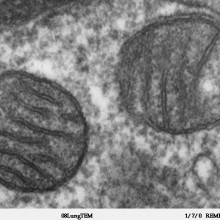
17:15 - Replacing Faulty Mitochondria
Replacing Faulty Mitochondria
Faults in mitochondria - the so-called powerhouse of a cell - are the cause of a number of human disorders. Now, researchers in Oregon have demonstrated successful replacement of mitochondrial DNA in egg cells that then developed into healthy animals.
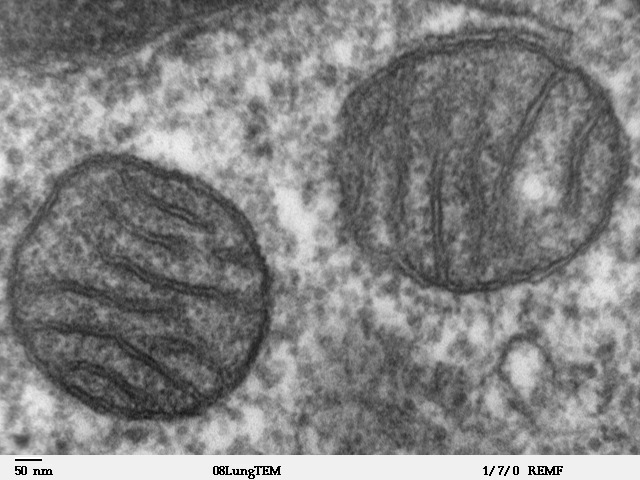 Mitochondria are passed down from mother to child, and errors in mitochondrial DNA (or mtDNA) can lead to a range of conditions, including heart failure, muscle weakness and blindness. It's thought that these errors may affect as many as 1 in 200 children, though around 1 in 5000 show evidence of disease at birth. There are currently no cures and present treatments only alleviate symptoms and delay disease progression.
Mitochondria are passed down from mother to child, and errors in mitochondrial DNA (or mtDNA) can lead to a range of conditions, including heart failure, muscle weakness and blindness. It's thought that these errors may affect as many as 1 in 200 children, though around 1 in 5000 show evidence of disease at birth. There are currently no cures and present treatments only alleviate symptoms and delay disease progression.
An ideal solution would be to avoid inheriting damaged mtDNA at all. To this end, Masahito Tachibana from the Oregon Health & Science University and colleagues have been researching ways to replace faulty mitochondria in human egg cells, or oocytes, with healthy ones from a donor.
Using donated human oocytes, the researchers extracted genomic DNA - the general DNA makes you unique - and implanted this into an egg that has healthy mitochondria, but has had its own genomic DNA removed. These eggs were then fertilized by IVF and allowed to form blastocysts - bundles of cells that could, potentially, go on to form a human embryo. Around half of these cells fertilized normally, and went on to produce similar numbers of stem cells as other control cells that hadn't had the DNA transplant, but were fertilized in the same way. This has been described as three-parent IVF, as the nuclear and mitochondrial DNA came from two different women.
The research on human cells stopped at this stage, but previous work has been carried out on eggs from macaque monkeys, transplanting the DNA in the same way. These eggs were implanted in female macaques, and have now developed into fully healthy, three-year-old monkeys.
The researchers, writing in the journal Nature, now call for more research into the safety and efficacy of this type of research, so that we can move forward into clinical trials.
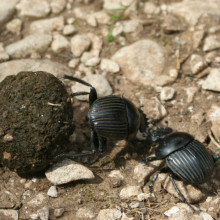
20:30 - Beetles use dung balls to keep cool
Beetles use dung balls to keep cool
South African dung beetles scuttling across scorching hot desert sands use their dung balls not just as food but also as a way to help keep themselves cool, a new study reveals.
The research team led by Jochen Smolka from the University of California Berkley watched dung beetles - also known as scarab beetles - rolling balls of dung across two circular arenas drawn into the sizzling sand at midday in the South African desert.
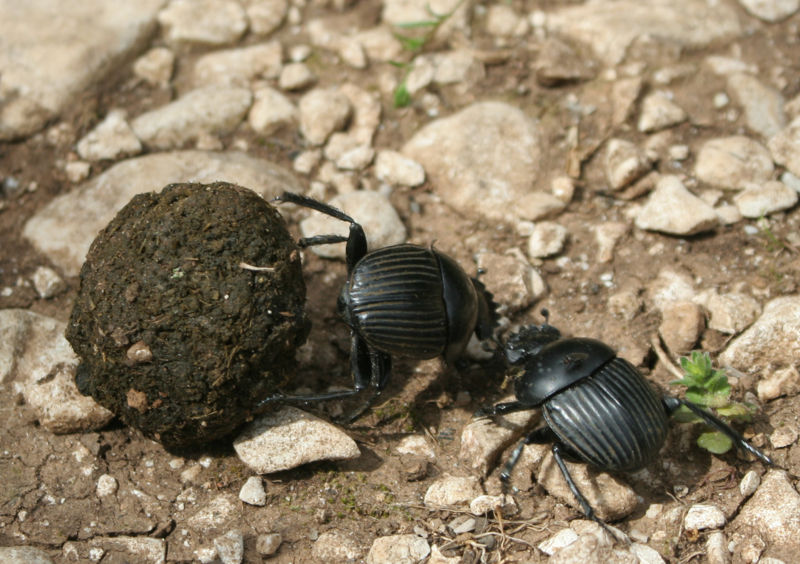 Publishing their results in the journal Current Biology, the team found that when they shaded the arena and kept the temperature below 50 degrees, the beetles crawled straight along without stopping. But at higher temperatures the beetles periodically stopped and climbed on top of their dung balls, where they preened their front legs - perhaps licking fluids onto themselves to cool down by evaporation.
Publishing their results in the journal Current Biology, the team found that when they shaded the arena and kept the temperature below 50 degrees, the beetles crawled straight along without stopping. But at higher temperatures the beetles periodically stopped and climbed on top of their dung balls, where they preened their front legs - perhaps licking fluids onto themselves to cool down by evaporation.
At progressively higher temperatures, the beetles climbed up on their balls more frequently until at 60°C they spent 70% of their time on top of their balls.
Using thermal imaging cameras the team found that while standing on sand, the beetles' legs can get 10 degrees hotter and then they cool down again quickly when they climb onto the ball.
To test whether getting hot feet is what causes the beetles to climb on their balls, the researchers gave the beetles little silicon booties to kept their feet insulated against the hot sand.
Putting on these boots reduced the number of times the beetles climbed up on their balls by 35%.
There are a few ways that the balls work to help keep the beetles cool. Firstly, they provide a platform so they can take a break from standing on the hot sand - desert ants do something similar by climbing up blades of grass.
The balls also provide the beetles with a heat sink because being moist they cool down by evaporation to around 31°C. To test whether cooler balls are better heat sinks, the team gave the beetles refrigerated and heated balls to push - the beetles climbed onto the hot balls (40°C) 73% more often than the cool balls (15°C). And since the beetles push rather than pull, the normal balls cool down the sand that the beetles then tread on by a couple of degrees.
So it seems that carrying around its own personal cooling device gives a dung beetle an advantage over other animals since it doesn't have to scurry off in search of shelter when things get too hot - all it has to do is take a break from the pushing and hop on top of its dung ball.
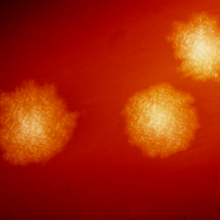
24:19 - Bacterial Cocktail Sees Off C. diff
Bacterial Cocktail Sees Off C. diff
with Prof. Brendan Wren, London School of Hygiene and Tropical Medicine
Ben - Clostridium difficile, or C. diff. is a potentially lethal, often hospital-acquired infection of the gut, causing bloating, diarrhoea and abdominal pain. One strain, O27, is particularly aggressive, and has caused 50,000 cases and 5000 deaths in recent years in the UK alone. It's often associated with a disruption of the bacteria that normally live in the gut, the gut microbiota, so can be a big problem when people are treated with broad-spectrum antibiotics.
Now, new research at the Sanger Institute in Cambridge, the University of Aberdeen and the London School of Hygiene and Tropical Medicine has identified a cocktail of bacteria which, when fed to infected mice, clears out the C. diff. Brendan Wren, from the London School of Hygiene and Tropical Medicine, is involved in the project, and he joins us now.
Brendan, thank you ever so much for joining us. So, what really is the problem with C. diff?
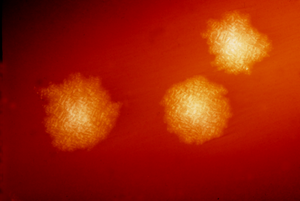 Brendan - It's a fairly unusual infection in the sense that antibiotics, which we all rely on, actually end up exacerbating the disease. So, when patients are given antibiotics, it kills the good bacteria as well as the bad bacteria and it disturbs the gut microbial balance. In other words, the antibiotics are indiscriminant and under these conditions, the bacterium Clostridium difficile takes over, produces toxins and as you mentioned, it can cause death and severe diarrhoea.
Brendan - It's a fairly unusual infection in the sense that antibiotics, which we all rely on, actually end up exacerbating the disease. So, when patients are given antibiotics, it kills the good bacteria as well as the bad bacteria and it disturbs the gut microbial balance. In other words, the antibiotics are indiscriminant and under these conditions, the bacterium Clostridium difficile takes over, produces toxins and as you mentioned, it can cause death and severe diarrhoea.
Ben - So traditionally, how do we treat it?
Brendan - There are some antibiotics that can be used, but these, again, do disturb the microflora and under these conditions patients are going to become more and more ill, and they can have multiple relapses. So, it's quite a desperate chronic disease, to the extent where in some countries, people have attempted to replace the microflora with bacteria from the faeces of a patient or near relative. So this faecal transplantation has been used fairly successfully in many patients to restore the microflora and overcome Clostridium difficile infection.
Ben - Now, faecal transplant, the very idea of it, has got quite a lot of yuck factor associated with it. Was this what inspired you to look for this particular cocktail of bacteria that you found?
Brendan - Well, my colleagues at the Sanger Institute have done exactly that, but important part of the study is that this mimicked the human disease in mice and that's allowed them to follow the disease and follow the populations of the bacteria in the gut, using the new 16S sequencing methods. This allowed them to know the relative proportions of very complex bacteria that is there and sure enough, when antibiotics are causing Clostridium difficile to take over the gut, they're able to monitor which bacteria became available as the mice recovered and ended up choosing a collection of six specific bacteria that could be used as a cocktail as a form of bacterial therapy. So now, we have a more rational approach as to restoring the gut microflora rather than using faecal transplantation.
Ben - it certainly gets over some of the yuck factor, doesn't it? What bacteria were these? Were these things we already knew about or is there something actually new to science here?
Brendan - Most of them are quite obscure and 3 of them were actually quite novel, and they've been fully sequenced now and can study them in far more detail. So, 3 of them were completely novel and I'm sure that there may be other bacteria out there that might be quite useful in a cocktail to help get back, to restore the normal microflora.
Ben - Now, is it something in particular about these bacteria that you think is performing the role or would it really work with any cocktail that's the right balance of bacteria?
Brendan - I think only some bacteria would allow this for various reasons. It's to do with competition for food and there are many different factors, but not all bacteria would be capable of doing this. So it's a form of probiotics, but it's a more rational approach, and we still have a lot to do to really understand why these in particular are good and I'm sure there's probably some others out there as well.
Ben - So, what's going to be the next step? Presumably, we can't just use the same bacteria because these are from mice, but can we apply the same sort of techniques to looking at the human gut microbiota and trying to work out if there are key microbes that we can then - as you said - put into a probiotic that we then use to treat C. diff?
Brendan - Yes, that's what we're doing currently with a new MRC £3million grant and we're looking at patients who come in to hospital before, after and during infection, then during reinfection. And using the new sequencing techniques we'll follow all the bacteria that's in the gut and work out an ideal combination that would allow rational bacteria therapy.
Ben - Now they say that your gut microbiota is as unique to you as your fingerprint. Does this mean that actually we'll have to work out a new cocktail for each person or in the mice, did you find that actually, there were these core bacteria that worked for every mouse you tested?
Brendan - At the moment, it did seem to work in most mice, but again, we won't know what will happen in humans. But there are some general species that we have great hope for and although people do have individual microbes, a thousand or so species, the point is that some of these would be particularly good at growing and counteracting the effect of competition with Clostridium difficile.
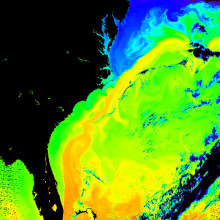
30:00 - How the Gulf Stream could be Melting Marine Methane
How the Gulf Stream could be Melting Marine Methane
Changes in the Gulf Stream over the last 5000 years are destabilising trapped methane over at least 10,000 square kilometres of the US eastern margin, and if this were to be released it could cause abrupt climate changes, according to research published in the journal Nature.
Methane hydrate is a solid form of ice and methane, and is stable at high pressures and low temperatures. They exist within the first few hundred metres of marine sediment in a region known as the Gas-Hydrate Stability Zone, or GHSZ, and represent one of the largest reservoirs of organic carbon on Earth. Sudden release of methane hydrate has been linked to past global climate changes, such as the Palaeocene-Eocene thermal maximum (PETM). Melting gas-hydrates have also been implicated in continental slope failures that cause underwater landslides.
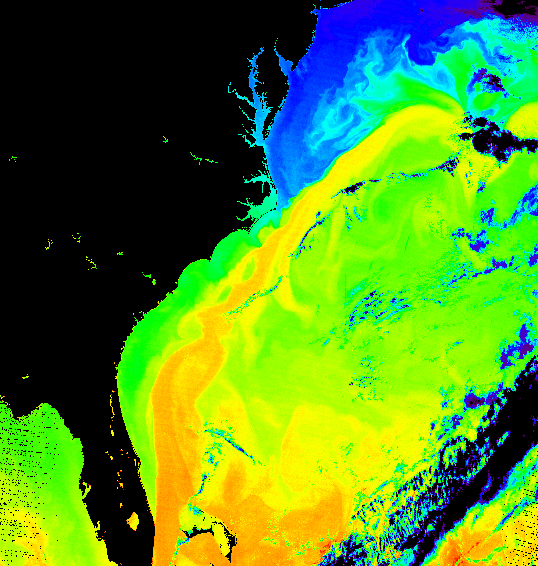 To investigate the stability of methane hydrates along the American continental shelf, Benjamin Phrampus & Matthew Hornbach at the Southern Methodist University in Dallas, Texas combined seismic data showing the depth of the GHSZ with thermal models. They found that stable zone is deeper than predicted from models based on current ocean temperatures, and suggest that this shows methane-hydrate melting occurring in the sub-seabed. Their results suggest that today's warmer temperatures are destabilizing up to 2.5 gigatonnes of methane hydrate.
To investigate the stability of methane hydrates along the American continental shelf, Benjamin Phrampus & Matthew Hornbach at the Southern Methodist University in Dallas, Texas combined seismic data showing the depth of the GHSZ with thermal models. They found that stable zone is deeper than predicted from models based on current ocean temperatures, and suggest that this shows methane-hydrate melting occurring in the sub-seabed. Their results suggest that today's warmer temperatures are destabilizing up to 2.5 gigatonnes of methane hydrate.
To try to explain this, the authors considered a number of different scenarios, and conclude that the most likely explanation is a change in either the temperature or location of the Gulf Stream - the warm current that flows across the Atlantic.
At present, it's unclear what affect this destabilisation may have, especially as there is some debate over the role of gas-hydrates in continental shelf instability, and predictions are that it could take as much as 5000 years for this methane to escape into the atmosphere. However, this new research highlights the importance of understanding methane hydrates, and points us towards new methods to research other important sites of methane storage where conditions are changing rapidly, such as in the arctic.
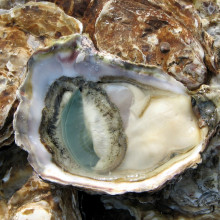
33:01 - The Plight of British Oyster Beds
The Plight of British Oyster Beds
with Dr Philine zu Ermgassen, Cambridge University
Ben - Also this week, a conference at St Catharine's College, here in Cambridge, hoped to shed some light on the plight of British oyster beds. Despite being a long way from the coast, oysters were once an important trade in Cambridge, especially at the Stourbridge Fair - dredging the river Cam turns up lots of old oyster shells, worn smooth by the passage of time and water. But as well as an important commercial species, oysters played an important ecological role. To find out more about British oysters, I met Dr Philine zu Ermgassen on the banks of the Cam...
Philine - Native oysters used to be a really dominant ecosystem in coastal waters all around the temperate climate of the world actually, so in the US and around Europe. But in the mid-1800s, they suffered enormous fishing and enormous over exploitation just through huge demands and the increase in technology associated with that fishery. So they went through a huge population crash. They're just a fraction of their former populations and fundamentally, that habitat has disappeared for many of our coasts.
Ben - What are the threats that the oyster beds are facing? Is it purely over fishing or are there invasive species, disease, those sorts of problems as well?
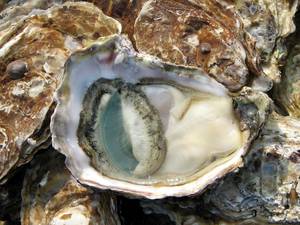 Philine - The beds have suffered from over exploitation, but the peak exploitation was really towards the end of the 1800s. Since then, they've never really recovered and that's as a result of numerous factors including invasive species, the introduction of a disease in the '80s which really has a high mortality on the native beds, as well as pollution.
Philine - The beds have suffered from over exploitation, but the peak exploitation was really towards the end of the 1800s. Since then, they've never really recovered and that's as a result of numerous factors including invasive species, the introduction of a disease in the '80s which really has a high mortality on the native beds, as well as pollution.
It's clear, we know now by looking at the oysters, that they provide a whole range of services which we definitely aren't getting anymore. Things like water filtration, they are filter feeders, so they clear the water column, making the water more transparent which is great for bottom rooting vegetation. They also help denitrify the water by concentrating these sediments full of nitrates which then bacteria work on to convert those nitrates that are very active biologically to nitrogen which is inert and can escape into the atmosphere. They also create fantastic structure which fish love as a habitat, particularly when they're small, they can hide between the oysters and suffer from a lower rate of predation as a result.
Ben - So, what would a typical healthy oyster bed look like?
Philine - There are very few examples remaining, but a typical healthy oyster bed would be made up predominantly of oysters. They'd be lying on the dead shells from previous generations of oysters, and they'd be at a relatively high density - probably, over 50 oysters per metre squared.
Ben - And what are the oyster beds that we do see now? What do they look like?
Philine - The oyster beds that we see today are defined by OSPAR, which is an international convention, as being more than 5 oysters per metre squared and they are really not habitat building. When we do find them they tend to be individuals scattered across the ground. They're not really building any habitat whatsoever anymore. They're really sitting on the sediments.
Ben - What do we think might be the impact if we do actually lose these oyster beds completely?
Philine - Again, we don't really know because we don't have very good baseline data and there aren't many good examples out there. What we do know is they have been lost completely from the Wadden Sea in the Netherlands and associated with that loss of habitat, there has been a loss of several associated species. It's clear that if we get these habitats back, we really hope that we can start to see a bolster of the populations that were previously associated with them. As yet, we can identify those species, we need a bit more science.
Ben - What now do we think we can start doing to try and get back to that position and to give ourselves healthy oyster beds again?
Philine - Oyster restoration has been really successful in the United States. They've invested a lot of money into restoration and they have huge public support for putting reefs back in water where they previously were found and now are non-existent. It's huge investment, but also, the public have really got behind it. We're not really seeing that yet in the United Kingdom. It would be great to see more support for the native oyster. Hopefully, as people realise the real value of the habitat that we've lost, we'll begin to see that motivation reappear in our communities. But certainly, in coastal communities still today, there is a great love of the oyster. There's a lot of cultural value associated with having that fishery and with knowing they're out there providing all these services.
Ben - What's going to be the next stage? How do we actually take this forward to come up with a more comprehensive, and a more joined up plan to make sure that we can protect these environments?
Philine - At the moment, really the key players in oyster restoration are the fishermen themselves. The fishermen have a great understanding of this habitat and of the species, and a fantastic cultural connection with them, and they're really the best advocates for restoration that we have. They're really pushing for restoration in the United Kingdom primarily so they can restart an active fishery on the basis of a native oyster and not just the non-native. I think that's definitely the place to start. Ideally, we'd love to see that grow into habitat restoration where restoration is taken purely for the habitat's sake and for all those services.
Ben - Does this mean that as a consumer, we should be asking for English oysters in order to encourage those fishermen to make sure they bring us the right things?
Philine - Absolutely. We should be eating more native oysters. It is a big concern that if we start to produce more, the culture associated with eating oysters more commonly has declined and that there won't be a demand. We'd love to be able to support our local fishermen in investing in this restoration to produce more native oysters.
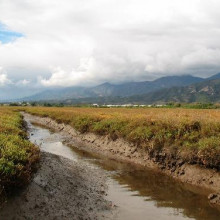
38:04 - Salt Marshes - Planet Earth Online
Salt Marshes - Planet Earth Online
with Alastair Grant, University of East Anglia
One of Britain's most unusual landscapes can be found along its coastline.
Salt marshes are home to unique species of plants, provide breeding grounds for birds and act as natural flood defences.
Over the years, many salt marshes have been lost to agriculture or reclaimed for development but now there are several major projects underway to restore areas of coastline back to their natural state.
However, as Planet Earth Podcast presenter Richard Hollingham has been finding out in North Norfolk, a new study has found restoring salt marshes is extremely difficult...
Richard - I'm looking out across a vast salt marsh. There are channels of water, rather a lot of mud, tufts of vegetation, patches of brown and green and the odd yellow flower poking through - just beyond the horizon there should be the sea. There's a wind farm offshore in the distance. This is Stiffkey, a salt marsh almost exactly midway along the north Norfolk coast and with me is Alastair Grant from the University of East Anglia...
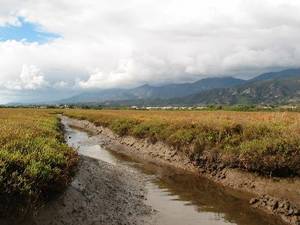 Alastair - Salt marsh is covered with terrestrial plants but several times a month the salt marsh will be covered by sea water, so the terrestrial plants that live here have to be able to cope with full strength sea water. Almost no plants can do that so we're dealing with unique biodiversity plants that only live on salt marshes and aren't found anywhere else.
Alastair - Salt marsh is covered with terrestrial plants but several times a month the salt marsh will be covered by sea water, so the terrestrial plants that live here have to be able to cope with full strength sea water. Almost no plants can do that so we're dealing with unique biodiversity plants that only live on salt marshes and aren't found anywhere else.
Richard - Now you've been looking at projects to recreate salt marshes.
Alastair - That's right. There used to be huge areas of salt marsh around the UK, the great majority of those have been reclaimed for use as agricultural land. We're now down to about 40 square kilometres of salt marsh in the whole of England and Wales. That salt marsh is eroding as a result of sea level rise and other pressures. As a result of that there's actually a legal requirement on the Government to create salt marsh to replace any salt marsh that is being lost to coastal erosion, if you want to build a new port that involves destroying salt marsh or indeed mud flat then you have to create habitat to replace the habitat that is being lost to the coastal development.
Richard - But what you found with your study is that recreating it, it doesn't end up as the same.
Alastair - That's right. Because salt marshes develop naturally on mud on the upper intertidal, everyone assumed that all you would need to do would be to let the sea back in and nature would take its course. But actually it is not that simple. Sites that were created 20 years ago now still lack many of the most interesting species - sea lavender, for example, one of the most charismatic of the plant species is almost completely absent from created marshes. And it is not just a question of time. So, we've looked at sites that were flooded accidentally, in some cases more than a century ago and they still are not like natural salt marshes. They are a bit better but they still lack many of these perennial species, many of the more interesting species and don't recreate the biodiversity or the landscape characteristics of the natural marshes.
Richard - So why do you think that is? What do you think is going on?
Alastair - It seems to be down to the environmental conditions, so what happens when you take a salt marsh and drain it for agricultural use? The salt is washed out of the soil, the soil texture changes, the organic carbon in the soil oxidises and the soil shrinks and when that is flooded again it tends to be rather too consolidated. On the upper salt marsh it can be very hard, almost like concrete, on the lower salt marsh it is often too water-logged so it is a bit like having a pot plant where you give it too much water, the soil becomes deoxygenated and very few plants can survive in those conditions.
Richard - So what does that mean? I suppose it means we must preserve the salt marsh that still exists and, what, do your best to get salt marsh back?
Alastair - Yes, it certainly means that we should preserve the salt marsh that we've got, particularly the upper more diverse marsh which is so difficult to recreate. Since we did the work that is described in this paper we've actually been looking at ways that you can manipulate the environment to try to make conditions better. We've also been looking at planting these more interesting plants and we can establish them if we establish the right conditions then we can establish the plants and the survival of those transplanted plants is very high.
Richard - So the bottom line is preserve what's here?
Alastair - Certainly wherever possible preserve what's here.
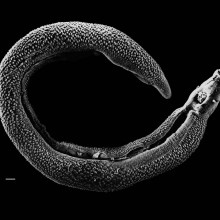
43:02 - Preservation of Parasites
Preservation of Parasites
with Dr Andres Gomez, American Museum of Natural History
Almost every species has its own unique species of parasite - so with every extinction we're losing at least one extra species, that may have never been properly studied. Andres Gomez, from the American Museum of Natural History in New York, argues that parasites need to be pushed up the agenda, not just in scientific research, but also in the teaching of conservation. Andres, thanks for joining us. Firstly, why parasites?
Andres - Parasites have very important roles in ecosystems. They have shaped not only the evolutionary processes by which we observe biodiversity today, but they also have really important functional roles in maintaining ecosystems as we know them now. They're also very important numerically. We think that parasitism is the most common consumer strategy in the planet. So if we want to conserve biodiversity, by necessity, we'll be conserving parasites.
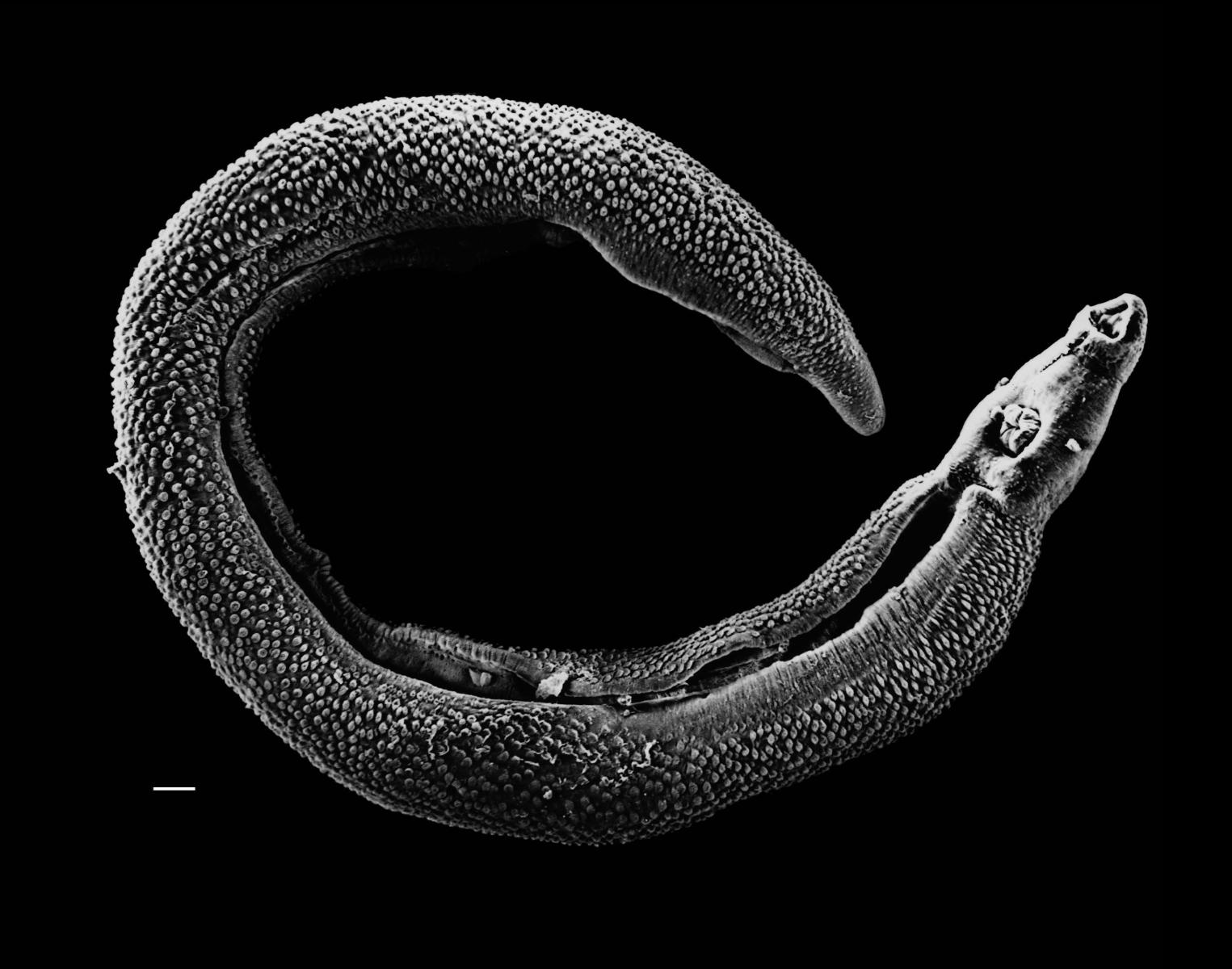 Ben - How well do we actually understand parasites? Because of their impact on people, they've been a topic of quite a bit of research, but from a broader perspective, as part of their role in ecological systems, how well do you think we understand them?
Ben - How well do we actually understand parasites? Because of their impact on people, they've been a topic of quite a bit of research, but from a broader perspective, as part of their role in ecological systems, how well do you think we understand them?
Andres - We are just beginning to understand their importance in ecosystems and things like food webs for example. It's only in the last decade or so that we have done most of their research uncovers the functions that parasites carry out in ecosystems across the globe. So there's a lot to learn.
Ben - Now, we've just been talking about the ecosystem services that oysters provide. Presumably, we're looking at similar things with parasites. There's something that they are doing that just wouldn't happen without their presence.
Andres - Absolutely and there are many examples of that kind of process and we usually separate ecosystem services from functions and by services, we usually only mean things that benefit humans. But there are a lot of ecosystem functions that are mediated by parasites that are incredibly important. Parasites mediate things like competition, species co-existence, distribution and abundance of their hosts through ecosystems and a whole other suite of things that are happening in nature.
Ben - We've also already mentioned the potential for genetic exploitation of microbes and this was a good argument for conserving things like bacteria and fungi. Are we seeing the same things with parasites? Is there something there that we can manipulate to get a benefit for people?
Andres - I don't know that we would necessarily need to manipulate parasites genetically to get that kind of benefit. We know that parasites produce a lot of biochemical substances out there that we can use for health and research for example. We know that parasites are engaging their host's immune systems in very complex ways, and by learning about parasites, we can learn about our own physiology and anatomy. We also know that parasites are doing things like absorbing heavy metals that they find in circulation in their hosts so, as much as they're hurting their host in one way or another, they could also be providing benefits to the host in some other ways.
Ben - I mentioned earlier that we think that there's at least one species or parasite for every species if non-parasite. Does this mean that in modern-day extinctions, they actually are the biggest losers?
Andres - We believe so, yes. We think that there are many more endangered parasites, than there hosts that we know are endangered. There's a recent study that estimated that if we were to lose just 5 species of carnivores in North America, we would lose up to 56 species of parasites. So, if you extrapolate that throughout the web of life, you could arrive at a number of threatened or extinct parasite species, that is a lot larger than those of the hosts that are usually the kinds of creatures that we care about.
Ben - Presumably, parasites face all of the same threats that their hosts face. So, looking at rhinos for example, if there is habitat loss that means that rhinos can't survive, that obviously immediately impacts on the parasites themselves. Are there other risks and other pressures that parasites are facing that we aren't considering as part of conserving the larger animals?
Andres - Parasites are interesting because they are one of the few types of creatures out there for which we have dedicated extermination plans. Invasive species being probably the only other one. So when we carry out eradication efforts for parasites - for good reasons because they definitely cause human suffering and losses for the economic development and so forth - we may be affecting the survival of other related parasite species that were not the target of the eradication effort for example. And there are other things that are happening - global processes like climate change that may benefit some parasites, but may definitely hurt others.
Then there's one other thing about parasites is that it's critical and that is that we know that parasites will decline, will co-decline with their hosts. So, as the population of the host declines, so will parasites, but the parasites will go extinct well before the hosts go extinct. They need a threshold host population to maintain an efficient transmissional level. So, we can have a situation which the host is still around but the parasites have gone already.
Ben - So, what do we now need to start doing in order to tackle this?
Andres - Well, we need to do several things. One of them is we need increase our research into parasites. We need to know what parasites are there, and in what kinds of conditions. We need to know how they are transmitted and their ecological dynamics. If we don't know that, we can hardly develop a strategic plan to conserve them. We also need to educate biologists as to the importance of parasites in ecosystems and to evolutionary time. And I think that we also need to do more things like what you're doing right now, making a case in the public that parasites are interesting, and they're charismatic in themselves, and that we probably wouldn't know biodiversity as we know it today without parasites.
Conserving for future genetic resources?
Gareth - I think the coming approach now with this capacity to sequence at huge levels is to just do all the DNA in the habitat and whilst you can also see what organisms are there, you also are looking at individual genes and pathways. And that's going to explore huge biotechnological potential.
Ben - So, it's not just looking at interesting DNA, but actually, how all of these fit together, also, the epigenetic factors, the things that control the expression of different genes.
Gareth - Yes. There's a fair bit of work to do having done that as well because you got to put them together into genome sequences and work out the genetic pathways that make these novel pathways work. There is huge scope there. I think it's going to be quite transformative of our knowledge of the processes that happen in these natural ecosystems.
Is conservation pointless?
Simon - I would say [this argument] misses the scale of the problem we're facing at the moment. This is the biggest mass extinction that there has been since the time of the dinosaurs. It's hard to believe that we're more potent than a meteor strike, but that does seem to be the case. I'm not a hippy by any means. I'm not awfully concerned about the preservation of animals or plants or things for their own sake. I'm partly for the preservation of the natural world, for the preservation of man. Not only would it be good to have forests for their own sake, but they are vital to our survival.
Ben - Now, I've heard the arguments before actually that when we're conserving an environment, what we're stopping is a process called succession that normally would push things on into the next phase. So, scrub land will become forest, etc. I guess this argument works in the same way that by keeping a variety of different ecosystems around, we're actually helping to preserve more life and more biodiversity.
Simon - Precisely and as well as that there's a lot of research now suggesting that biodiversity for its own sake appears to actually matter. Forests with more different variety of trees tend to be less prone to desertification, less prone to disease, there are fewer landslides. They're just more resilient as a whole.
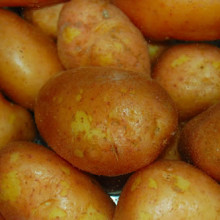
53:22 - How could I melt a potato?
How could I melt a potato?
We put this to Dr Peter Wothers, from the Department of Chemistry at Cambridge University.
Peter - I'm currently sitting in a café, enjoying my last of a mouthful of jacket potato here. Very good! So, why don't potatoes melt? This is actually quite a tricky answer, but it depends on the complexity of what we're trying to melt. The things that generally will melt - and reversibly, so if you cool them down, it might form a solid again - would be very simple substances. Certainly, everyone knows that mercury is already a liquid [at room temperature], if you cool it down, you'll get a solid again. You can keep doing that forever, it will just reverse between solid, liquid and solid as you warm it and cool it. But if you get more complicated things, there are other possibilities. Things can start to change, start to break down. Molecules can actually decompose and this is what's going to happen.
So, if you think about sugar, this is a more complicated structure. It's made up of 3 different types of atoms - we've got carbon, hydrogen, and oxygen. And if we warm this up, well, we can get liquid sugar. We can melt the sugar, and this is where the molecules are all moving around, still in their sugar forms. But if you heat that up too much, again, different parts of the sugar molecules might start to interact with each other and form new chemical compounds. You can boil off water and you're going to be left with this sort of black gooey mess which is carbon.
Now, when you come to a potato, it's even more complicated. You haven't got one type of substance there. You've got complete array of all sorts of complexity. You've got water there, you've got starches in there, you've sugars in there, you've got fats in there. All of these can start interacting with each other. You're not just going to end up with one liquid mess of all of those. They're going to start interacting at much lower temperatures, recombining, giving out water vapour and decomposing what's left into this sort of black gooey carbon mess, and that's what you end up with - your burned potato.
Hannah - So, due to the chemical complexity of the simple starchy spud, it can't melt. Instead, cooking causes the constituent molecules in the potato to interact, evaporate and decompose, and at really high temperatures, form just black carbon. Marshmallow on the other hand is made of simpler smaller molecules including refined sugars which, if we carefully heat at low temperatures, we can melt the inside and keep the sugars intact.










Comments
Add a comment